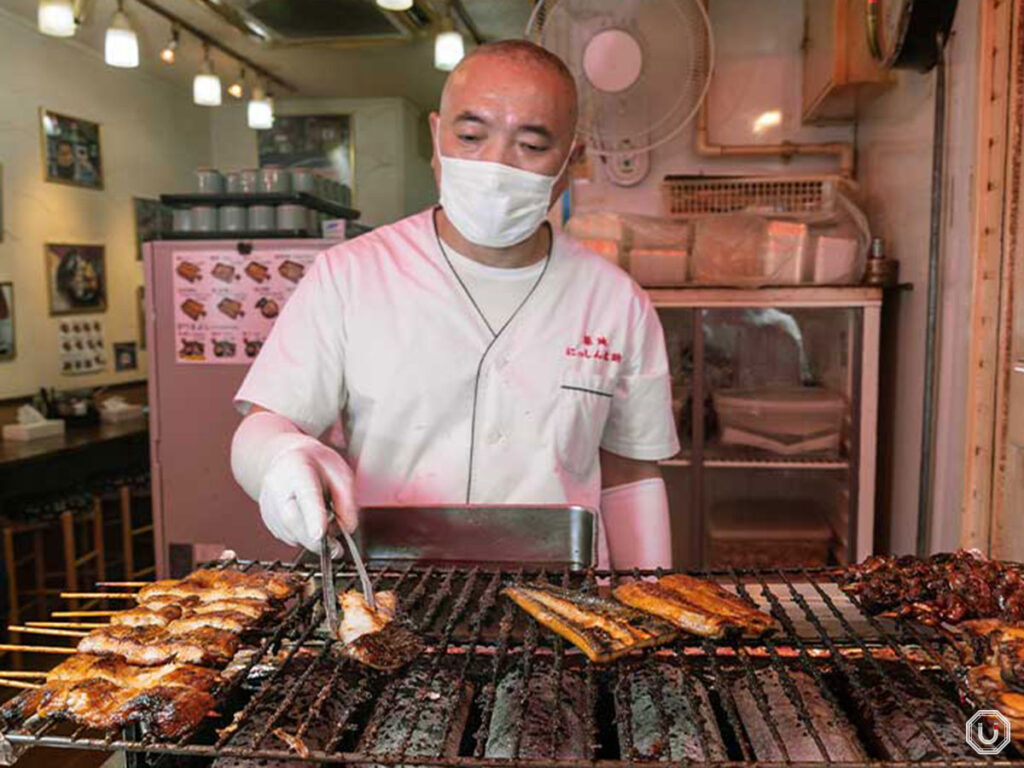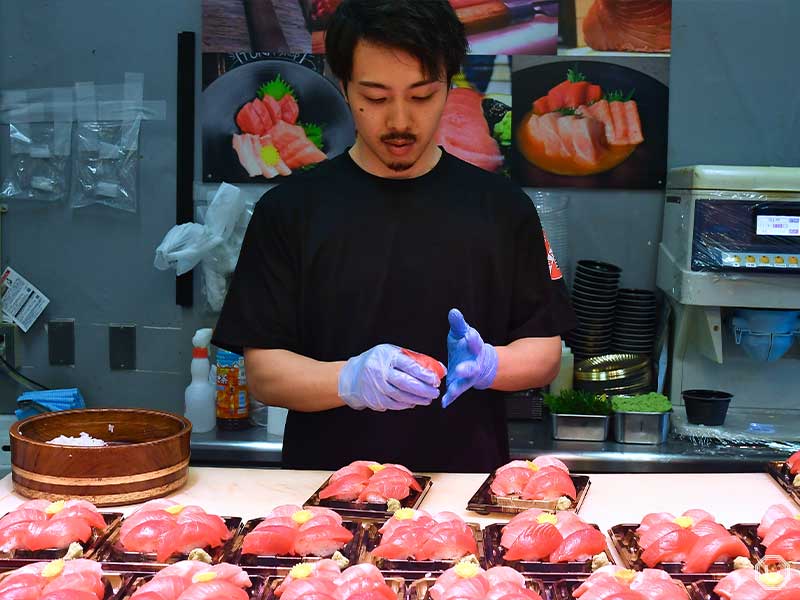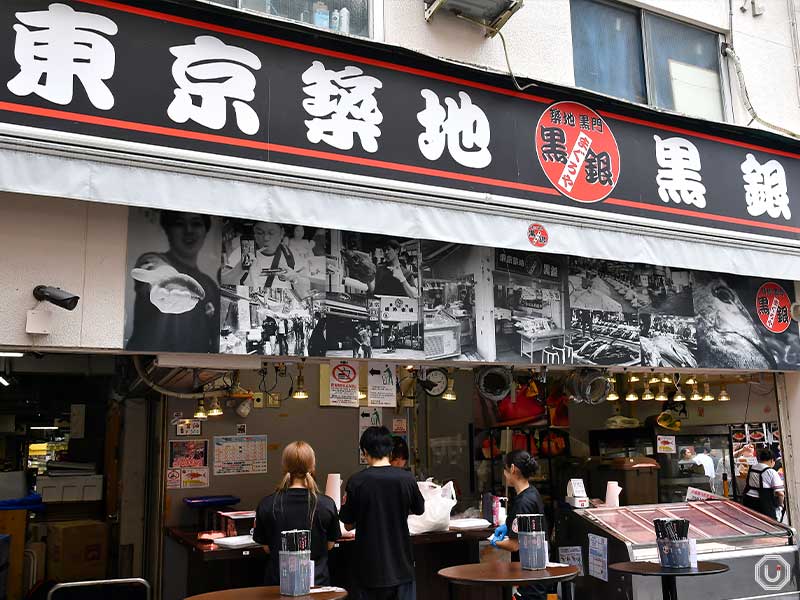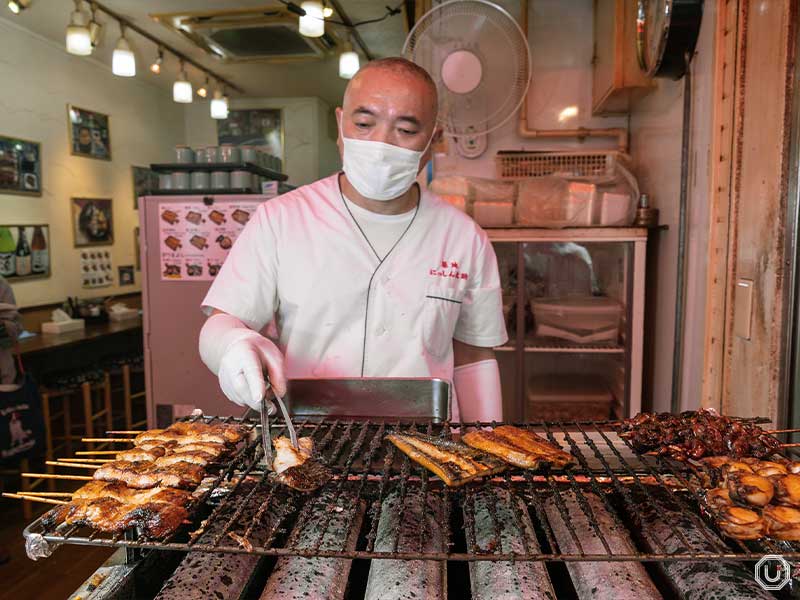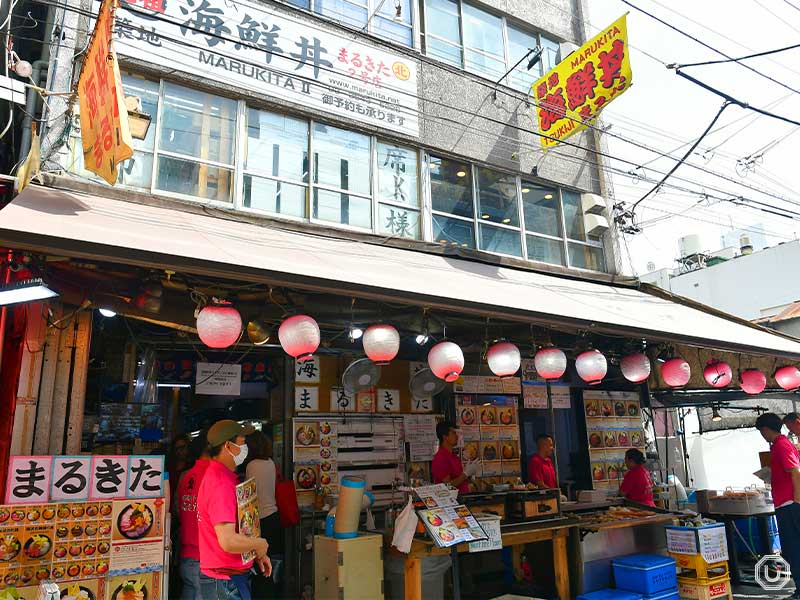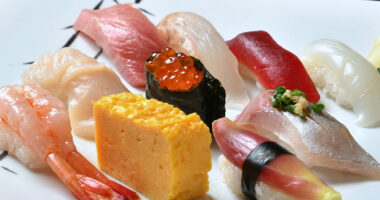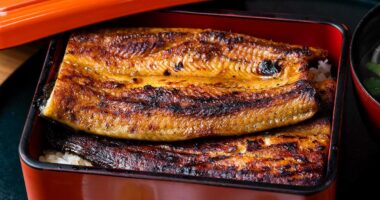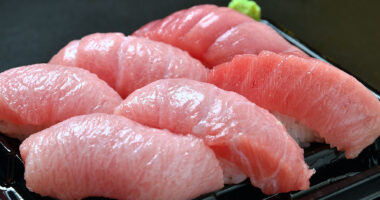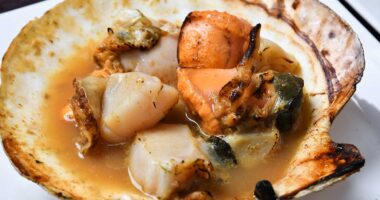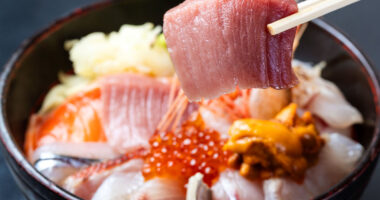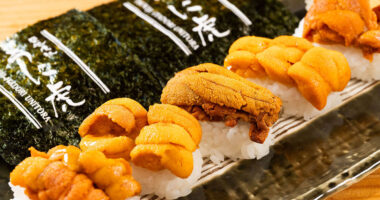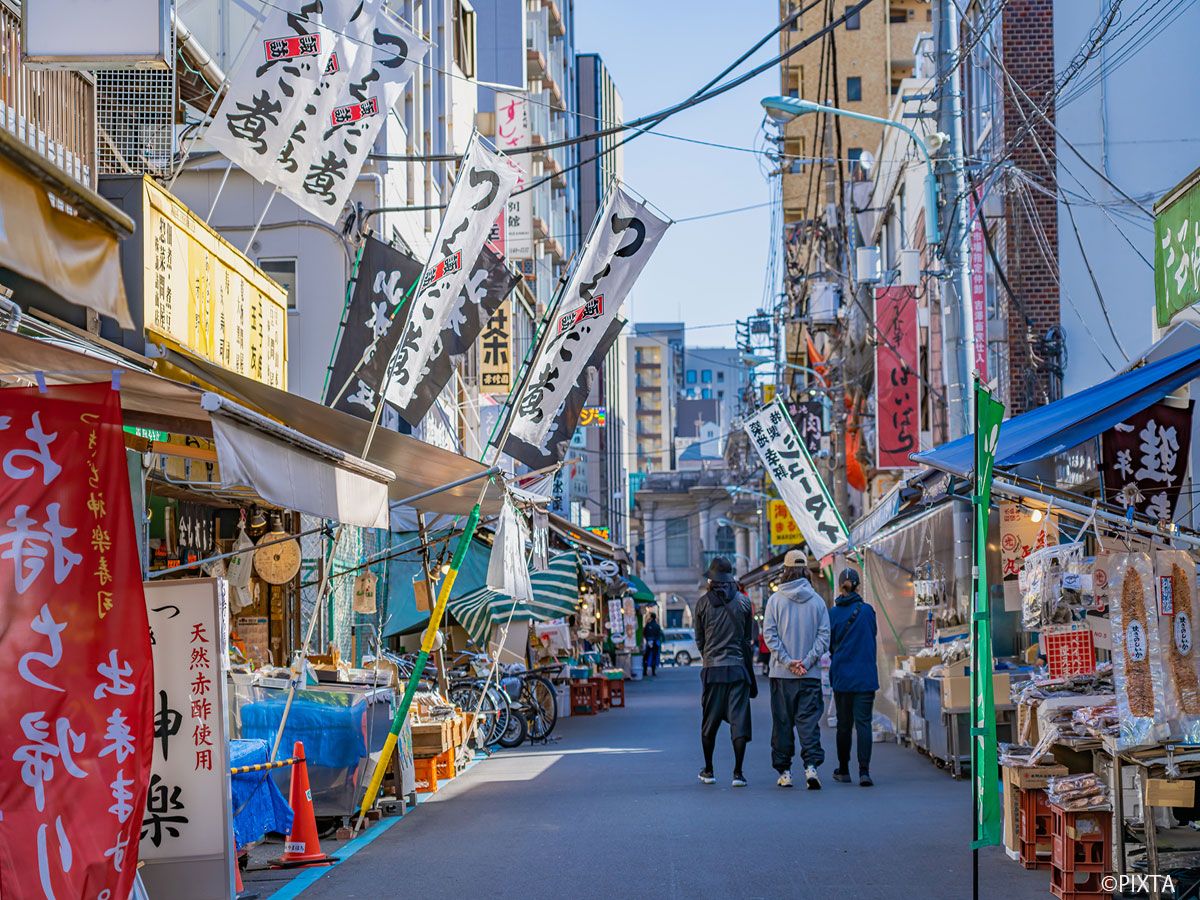For food lovers visiting Tokyo, Tsukiji is a must-visit destination.
Once Japan’s largest fish market that attracted foodies from around the globe, Tsukiji Market still retains much of its vibrant energy today.
Even after the wholesale market operations were moved to Toyosu, Tsukiji’s outer market continues to thrive, lined with sushi shops, seafood restaurants, and street food stalls where visitors can enjoy fresh seafood and immerse themselves in Japanese food culture.
From top-tier sushi to affordable kaisendon (seafood rice bowls) and artisanal dishes crafted with expert skill, Tsukiji offers authentic flavors for every budget, making it one of the best places to enjoy seafood in Tokyo.

Photo for illustrative purposes
Where to eat in Tsukiji: recommended sushi, sashimi & seafood spots
When in Tsukiji, be sure to stop by one of the many beloved restaurants that have earned a loyal following among both locals and tourists.
Tsukiji’s outer market is packed with restaurants offering sushi and sashimi made from ultra-fresh seafood, hearty kaisendon bowls, and dishes showcasing the refined skills of seasoned chefs.
From upscale sushi spots to more casual eateries, there’s something to suit every budget and dining style. Many restaurants offer English menus, so even first-timers can feel at ease.
Every place serves the kind of freshness unique to Tsukiji, and you’re guaranteed to walk away with an unforgettable food experience.
Featured on TV & food websites: “Sashimi Bar Kashigashira”
When visiting during lunch, the must-try dish at “Sashimi Bar Kashigashira” is their signature “Tsukiji-jyougai don.”
This two-tiered bowl features kaisendon (seafood rice bowl) on the top and chirashi sushi on the bottom—a feast for both the eyes and the stomach.
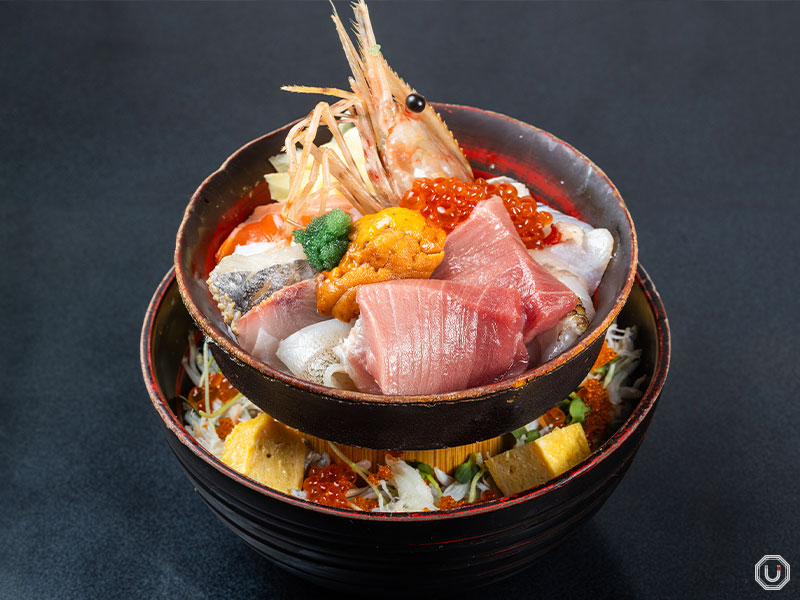
Tsukiji-jyougai don at Sashimi Bar Kashigashira
The kaisendon layer features 15 varieties of fresh seasonal seafood, all carefully selected by seafood experts.
To enhance flavor, the fish is aged using specialized techniques for added umami and depth.
The chirashi (sushi rice topped with various ingredients like sashimi, vegetables, and egg) sushi layer, topped with flying fish roe, salmon roe, and whitebait, is served with a playful twist—pour a special jelly over it, made with dashi and pickled ginger, served in a bamboo tube.
The jelly adds a rich, savory flavor that takes each bite to the next level when paired with the seafood.
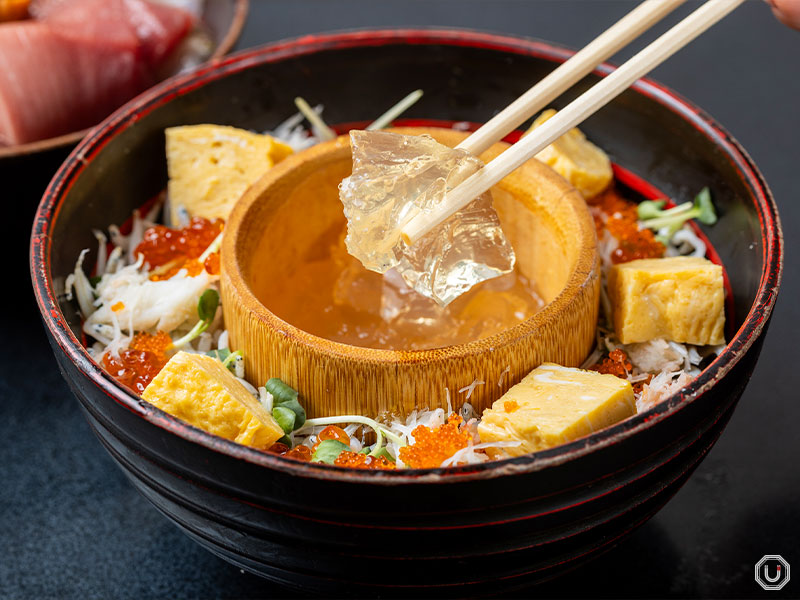
Tsukiji-jyougai don at Sashimi Bar Kashigashira
At just 4,200 JPY (tax included), it’s an unbeatable value for the quality.
This bowl truly captures the essence of Tsukiji—affordable, fresh, and satisfying.
Savor over 100 years of tradition: “Tsukiji Sushiiwa”
Established in 1921, “Tsukiji Sushiiwa Tsukijishiten” has passed down generations of sushi craftsmanship.
In the Tsukiji area, you’ll find both the main location and the Tsukiji branch—if you’re looking for a calm, luxurious experience, head to the Tsukiji branch.
The counter seating here is especially popular, offering an up-close view of the expert sushi chefs in a refined, traditional setting.
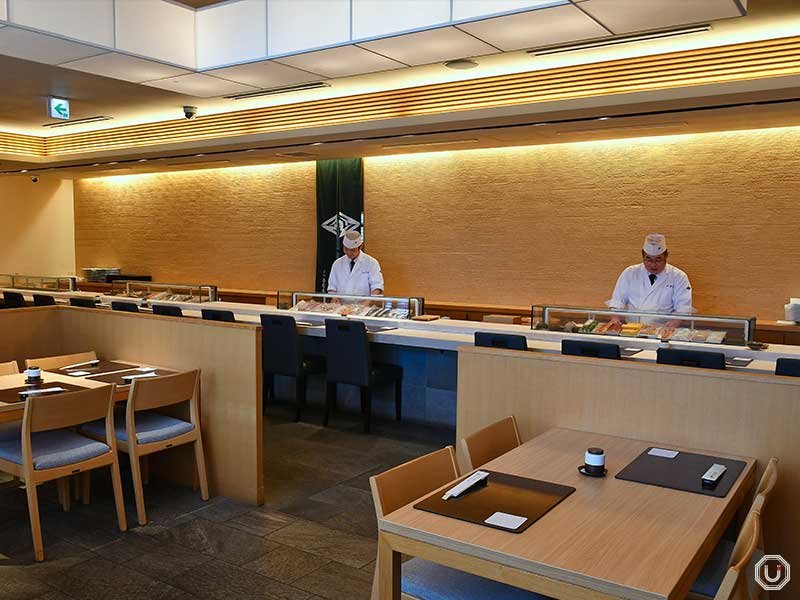
Interior of Tsukiji Sushiiwa
Be sure to try their weekday-only lunch special, “Seasonal Nigiri,” a 10-piece sushi set that lives up to the reputation of a long-established sushi house.
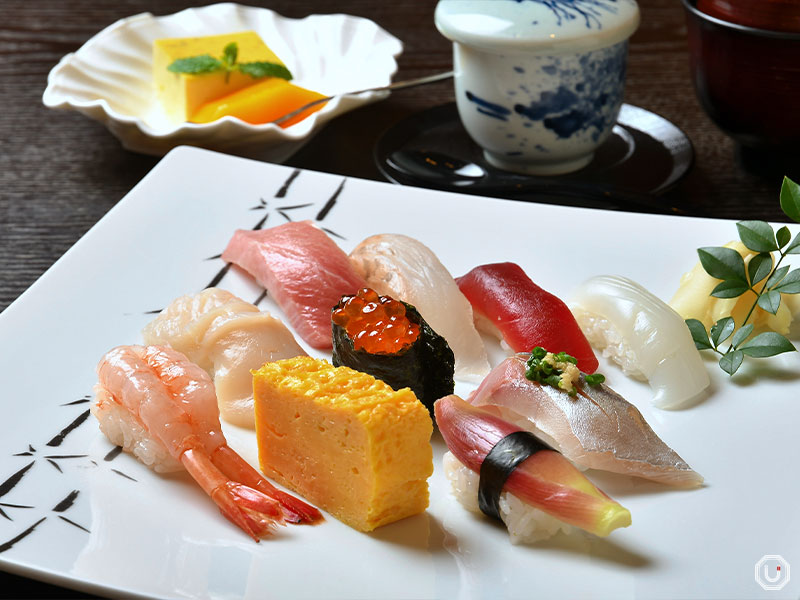
Seasonal Nigiri at Tsukiji Sushiiwa
The chef’s time-honored technique shines in every bite.
Each piece is delicately shaped with the image of a swimming fish in mind, highlighting the freshness and vitality of the seafood. The shari (sushi rice) is seasoned with white vinegar, balanced perfectly with sugar and salt to complement the toppings.
Its gentle sweetness and refined acidity enhance the umami of the fish, offering a profound sushi experience with every bite.
Enjoy premium tuna sushi and sashimi: “Maguroya Kurogin”
When it comes to the king of fish, tuna reigns supreme. Among the many varieties, the highest-grade is the bluefin tuna, also known in Japanese as honmaguro.
“Maguroya Kurogin Tsukiji Honten,” located in the Tsukiji outer market, specializes exclusively in this prized fish. The high number of repeat customers speaks volumes about the restaurant’s popularity.
The restaurant’s most popular dish is the “Special Fatty tuna/Very Fatty tuna/Medium tuna,” which offers a once-in-a-lifetime tuna tasting experience with three prized cuts: kama-toro (cheek/collar meat), ō-toro (fatty tuna), and chū-toro (medium fatty tuna).
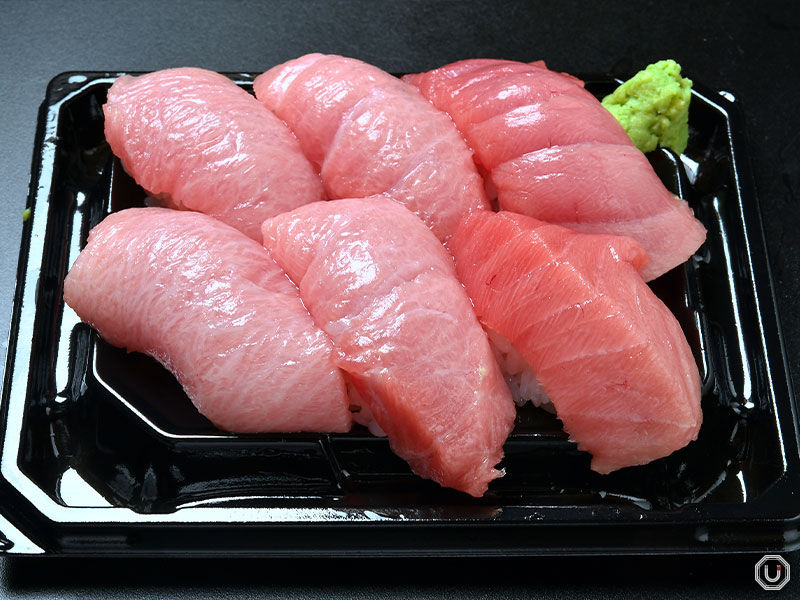
Special Fatty tuna/Very Fatty tuna/Medium tuna at Maguroya Kurogin
The kama-toro melts in your mouth with a smooth texture, while the o-toro and chu-toro offer a perfect balance of umami and sweetness—each one a masterpiece.
The tuna’s rich fat is so flavorful, even the wasabi’s bite feels mellow in comparison.
Enjoy it with their house-made soy sauce, specially crafted to highlight the tuna’s natural flavor.
Street food on a stick for just 400 JPY: “Tsukiji Unagi Shokudō”
In the tightly packed Tsukiji outer market, street food that you can eat on the go is part of the fun.
Skewered and grilled items are a staple of casual Japanese cuisine, perfect for one-handed snacking.
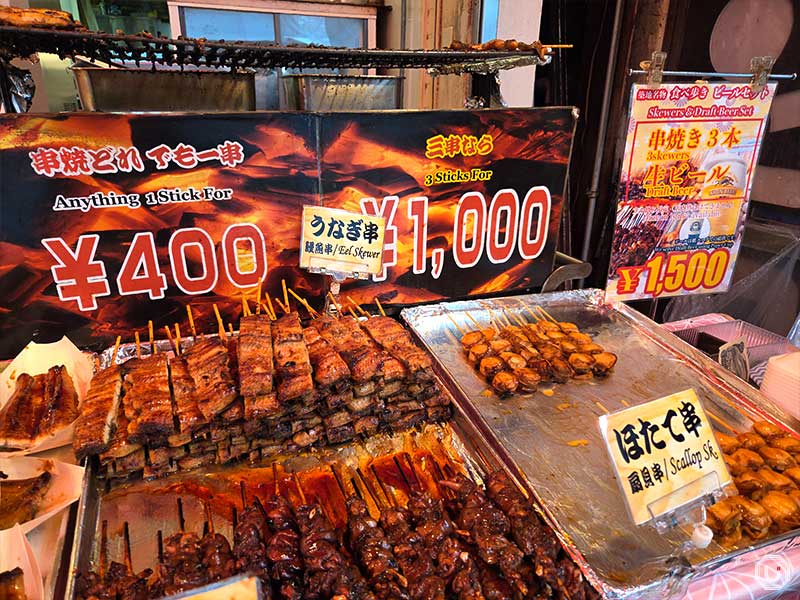
Grilled skewers at Tsukiji Unagi Shokudō
“Tsukiji Unagi Shokudō” is a restaurant that offers a wide variety of skewers, including eel, scallops, and sablefish.
They’re especially serious about their eel, using only high-grade shinko unagi, which is tender, low in bones, and delicately textured.
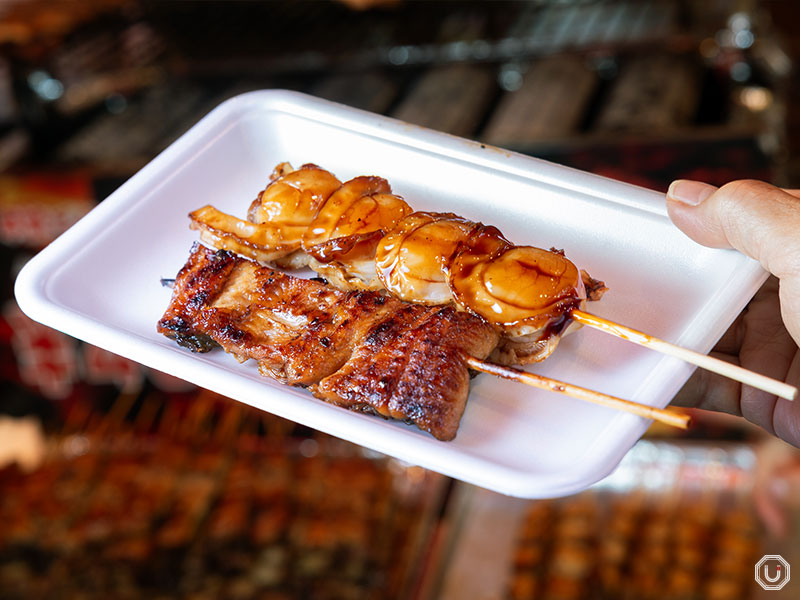
Grilled skewers at Tsukiji Unagi Shokudō
The unagi skewer is grilled to perfection—crispy on the outside and fluffy inside—and surprisingly high in quality for just 400 JPY (tax included).
Each skewer is freshly grilled to order, ensuring maximum flavor and satisfaction.
Seafood BBQ for a quick bite: “Kaisendon Marukita”
If you want to enjoy a little bit of everything from the sea, “Kaisendon Marukita 2nd Branch” is the perfect stop.
They offer hamayaki (charcoal-grilled seafood, barbecue-style), which can be ordered piece by piece. Sashimi offerings like tuna, sea urchin, and crab come in smaller portions, making it ideal for sampling and tasting.
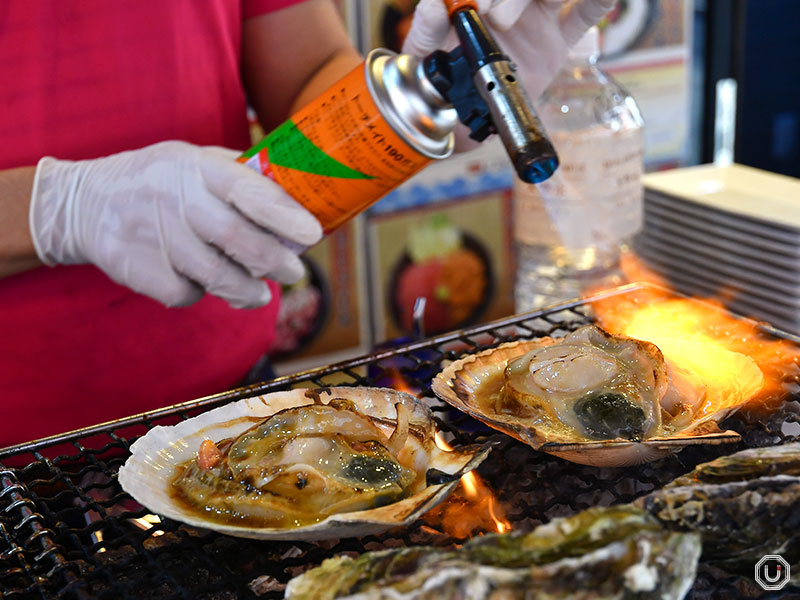
Grilled Scallops at Kaisendon Marukita 2nd Branch
The standout is their grilled scallop—thick, tender, and full of flavorful juices. It’s a bite of rich, ocean-fresh umami.
Watching the seafood being grilled right in front of you adds to the excitement—this live experience is part of the restaurant’s appeal.
With over 800 customers visiting per day, this is one of the most popular stops in the market.
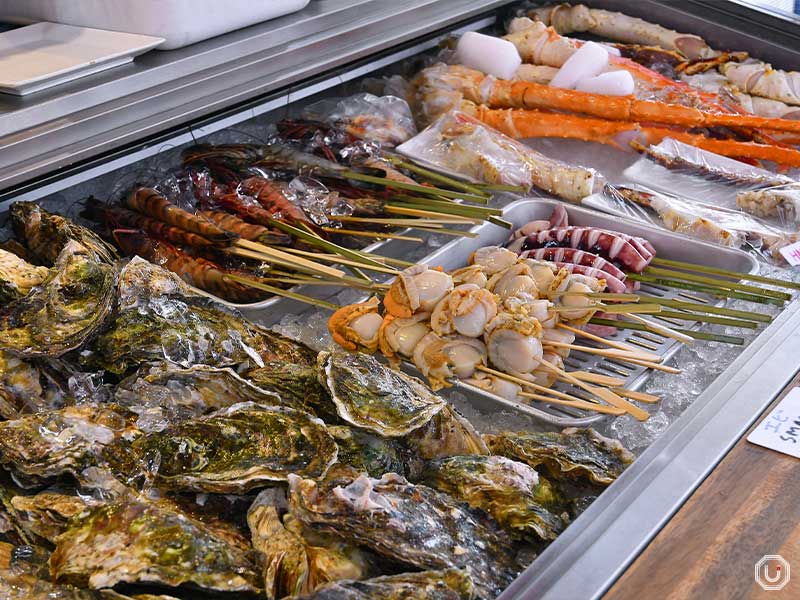
Grilled seafood at Kaisendon Marukita 2nd Branch
Perfect for solo travelers: Tsukiji has unique food and cultural offerings
Tsukiji is also perfect for solo foodies exploring Tokyo on their own.
Most restaurants, especially sushi bars, are counter-based, making it easy to dine alone comfortably.
At Maguroya Kurogin, for example, there are standing counters outside the shop, where you can casually enjoy fresh sashimi and sushi on your feet—ideal for a quick bite.
Likewise, many vendors—including Tsukiji Unagi Shokudo—grill and serve food right in front of you, offering freshly prepared dishes on the spot.
Watching your food being cooked right before your eyes makes it feel like an open-air food stall experience—intimate, dynamic, and fun.
This casual and interactive style of dining is something unique to Tsukiji and enriches the solo travel experience by engaging all five senses.
Tsukiji is not just about food—it’s also a place to experience Japanese food culture.
One of the highlights is witnessing a live tuna cutting show, where a massive tuna is expertly broken down with masterful knife skills. If you’re lucky, you might stumble upon one during your visit.
Solo travel gives you time to take it all in—learning a bit about the food and culture while wandering freely.

Photo for illustrative purposes
Whether you’re savoring flavors in silence, walking at your own pace, or making spontaneous discoveries, Tsukiji offers a rich and rewarding experience for solo travelers.
Tips for visiting Tsukiji: best times to go & payment options
To make the most of your Tsukiji visit, timing is key. Most shops in the outer market open early, with mornings offering the freshest catch of the day.
That said, mornings can get crowded with tourists. If you prefer a quieter experience, visiting after noon is a great option. The post-lunch hours are usually calmer, making for a more relaxed atmosphere.
While many stalls close between 1:00–3:00 PM, some—like Kaisendon Marukita 2nd Branch—stay open from early morning to late afternoon, allowing for flexible visits.
Order just one kaisendon and you’ll be shown to a seat inside, perfect for a mid-tour rest.
As for payment, note that while many shops now accept cashless payments, some still operate on a cash-only basis. It’s best to carry some Japanese yen with you just in case.
But if you arrive empty-handed, don’t worry—there are foreign exchange booths in the market where you can get yen on the spot.
Tsukiji is also well-prepared for international visitors, with multilingual menus and photo-based ordering systems widely available.
Tsukiji Unagi Shokudo, for example, has staff who speak English, Chinese, and Thai, so you can order with confidence even if you don’t speak Japanese.
Though the wholesale operations have moved to Toyosu, the vibrant atmosphere of Tsukiji’s outer market remains unchanged. Don’t miss the chance to savor delicious, affordable seafood on your next trip!
*All information in this article is current as of July 2025.
